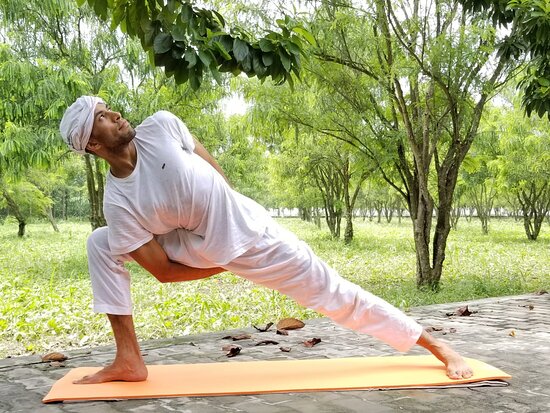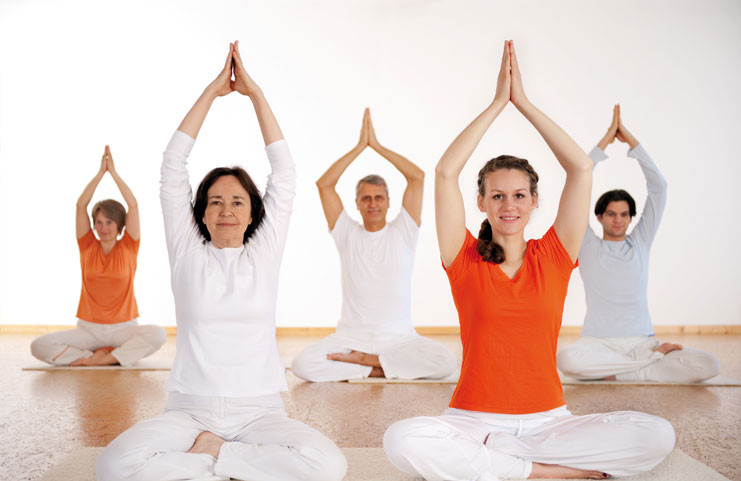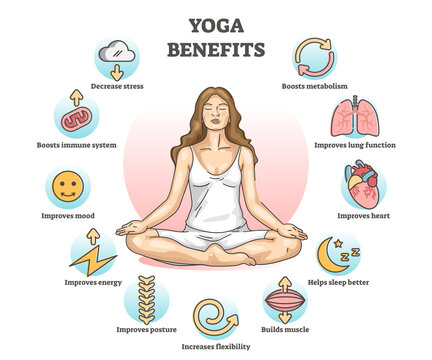
There are a variety of different reasons you might not be getting the sleep you need. Stress, hormonal changes, emotional problems, and even your diet can all play a role in keeping you awake. Yoga for insomnia is an effective alternative sleep aid formulated by a specialist in the ancient yogic techniques. Yoga for insomnia focuses on correct breathing and simple poses. This book can help you, regardless of whether you're looking to find an exercise program specific for insomnia or something more complicated.
Stress
If you're experiencing trouble sleeping, you may have considered a practice like yoga for insomnia and stress. While yoga exercises can be extremely relaxing, they don't replace professional medical treatment. Talk to a doctor immediately if you are having difficulty sleeping or experiencing stress that prevents your body from sleeping. Yoga is not right for everyone. Consult a professional before starting. Here are some suggestions to get a restful night's sleep.
Hormonal changes
Researchers have long been intrigued by the effects of yoga on sleep, but few studies have looked at the effects of yoga on hormone levels. The study's authors sought a maximum effect size of 2 or more. Yoga had no effect on overall sleep quality or efficiency. However, this research gives some insight into how yoga can affect hormone levels. To assess the effectiveness, the study used Cohen’s categories.

Emotional problems
Sleeplessness is something that affects everyone, regardless of whether it's nervousness for a job interview, baby crying, or the stresses of parenthood. New parenthood is a time when we can all be exhausted. Yoga can ease the symptoms of emotional disturbances, and improve sleep quality. In this article, we'll look at some of the benefits of yoga for insomnia.
Diet
Insomnia can affect millions of people and is a common condition. It can be a temporary condition that lasts from one day to several weeks. In the United States, it affects as many as 54 percent of adults. Ten to fifteen% of these people are suffering from chronic insomnia. Sadly, many people turn to sleeping pills to treat their insomnia, and the number of prescriptions for these medications has increased 60 percent since 2000. Before you can find the right sleep aid for you, it is essential to understand why your insomnia occurs and how to treat it.
Exercise
For those suffering from insomnia, aerobic exercise may be a good idea. Studies have shown that aerobic exercise promotes sleep and increases oxygen levels. At least 20 minutes of aerobic exercise should be performed four to five times per week. This is a vigorous exercise that involves the use of the legs. It produces a fatigue which acts as a tranquilizer. Aerobic exercises work best for insomniacs because they can be done late afternoon or early evening. Aerobics can also raise your body temperature. This is a good thing because it helps you sleep better.
Restorative postures
Yoga poses can help insomniacs fall asleep. These poses can help you relax your body and mind making them an excellent choice before you go to bed. It will help you to be more relaxed and allow you to sleep better nightly. To get started, Malloy recommends that you practice five restorative yoga postures before bed. For six cycles, you can practice each pose. Try a chest and thigh pose. This pose helps you to bring your attention inward, releasing any stress or fatigue. For six more cycles, you can repeat the process.

Inversions
Inversions in yoga can have many benefits. One of these benefits is a decreased risk for insomnia. This is because inversions require minimal effort and help to wake you up. It is easier than doing a handstand and is great for this purpose. It helps release stress and allows your whole body to rest. You can even try forearm balance for added benefit.
FAQ
How does yoga change your body?
Yoga helps you relax, stretch, and strengthen your core. It also makes you feel great. Yoga improves flexibility, strength, and stress reduction. This can lead to improved sleep quality, better concentration, and higher energy levels.
Yoga also increases blood flow, making you less likely to have colds and flu. This is due to the fact that yoga allows you to breathe deeply, increasing oxygen supply to your brain.
Yoga relieves tension, pain, and helps with stress. The postures can strengthen the muscles and joints as well as improve posture.
To keep your body and mind healthy and happy, you should regularly practice yoga.
What is the average time it takes to learn yoga?
As with all skills, you need to train your brain so that you can do yoga correctly. Once you have mastered the basics of yoga, you will be able practice at home with no difficulty.
Before starting your class, do a few warm-ups. Begin by warming up with simple stretches. You can then progress to more difficult poses.
After mastering the basics, you can progress to intermediate classes where you will learn more advanced moves. For example, if your first attempt at yoga is to learn, you may start with standing poses such as the Tree pose (Vrksasana), Mountain pose (Tadasana), etc.
Yoga involves a lot of sweating.
It depends on the type of yoga that you practice. Vinyasa flow yoga (or power yoga) involves a lot jumping, twisting or turning movements. Because of this, people often sweat heavily while practicing.
Hatha yoga is a different type of yoga. It focuses on forwarding bends, and twists. Since these poses aren’t strenuous, most practitioners won’t feel heavy sweating.
Statistics
- The American Psychological Association recently shared that 84% of American adults feel the impact of prolonged stress (5). (healthline.com)
- In comparison, a 125-pound person is estimated to burn 135 calories in 30 minutes of walking (at a pace of 15-minute miles) and 210 calories bicycling at a moderate pace on a stationary bike. (everydayhealth.com)
- A 2020 review of 27 studies (1,805 total participants) of yoga interventions in children or adolescents found reductions in anxiety or depression in 70 percent of the studies, with more promising results for anxiety. (nccih.nih.gov)
- According to the Agency for Healthcare Research and Quality, falls are incredibly common among older adults in nursing facilities. Even the simplest ones can increase the risk of death (24). (healthline.com)
- According to calorie estimates calculated at Harvard Medical School, the average 125-pound person burns about 120 calories in a half hour of hatha yoga, and a 185-pound person burns about 178 calories in that half hour. (everydayhealth.com)
External Links
How To
Is yoga a good method to lose weight
You need to know what yoga is before you can answer this question. Yoga is an ancient form of exercise that originated in India. It was created by Indian yogis who were interested in spiritual awakening and physical fitness.
Yoga focuses on stretching and strengthening muscles while simultaneously relaxing the mind and body. The goal is to relax completely and be free from anxiety or stress. Focusing on breathing techniques and meditation are the best ways to do this.
Yoga involves many postures, or poses. These are meant to stretch and strengthen certain muscle groups. These poses are often held for several moments at a stretch. They can also include rhythmic movements, such as slow walking or jumping or moving through mud.
Yoga is not about burning calories, but increasing one's energy. Most people who practice yoga are able to maintain a healthy body weight.
Yoga will help you relax. You will feel more relaxed and happier, which will translate into better sleep.
You'll feel younger and your skin will glow.
When they begin to practice yoga, many people notice a drop in blood pressure.
Research has also shown that yoga may help reduce the symptoms of depression.
It is important to remember that yoga doesn't work the same way as other types of exercise. Instead, it works by increasing the flow of oxygen throughout the body. This allows the brain's to relax and release endorphins that trigger feelings such as happiness and pleasure.
It is important to note that weight loss may be a problem for some people because of their genes. Yoga may not be the best option for you if you are one of these people.